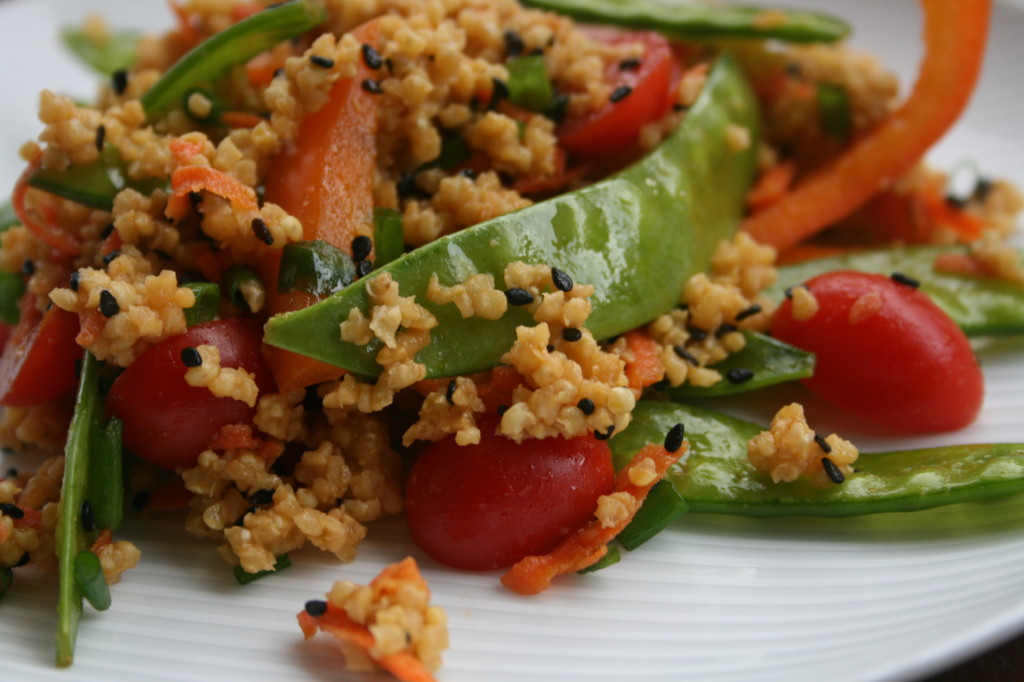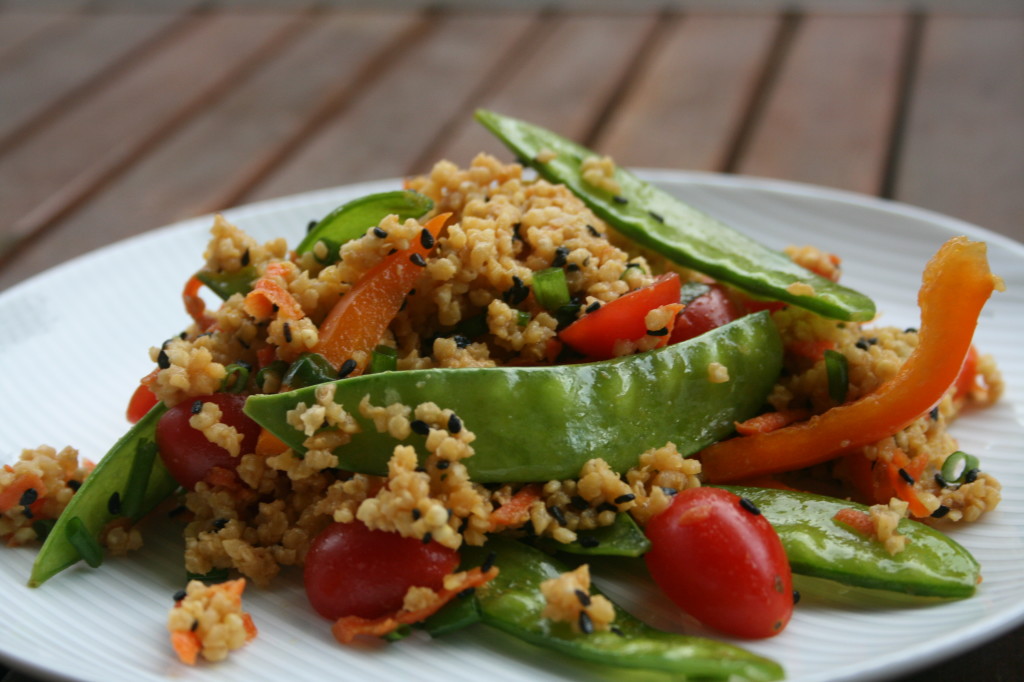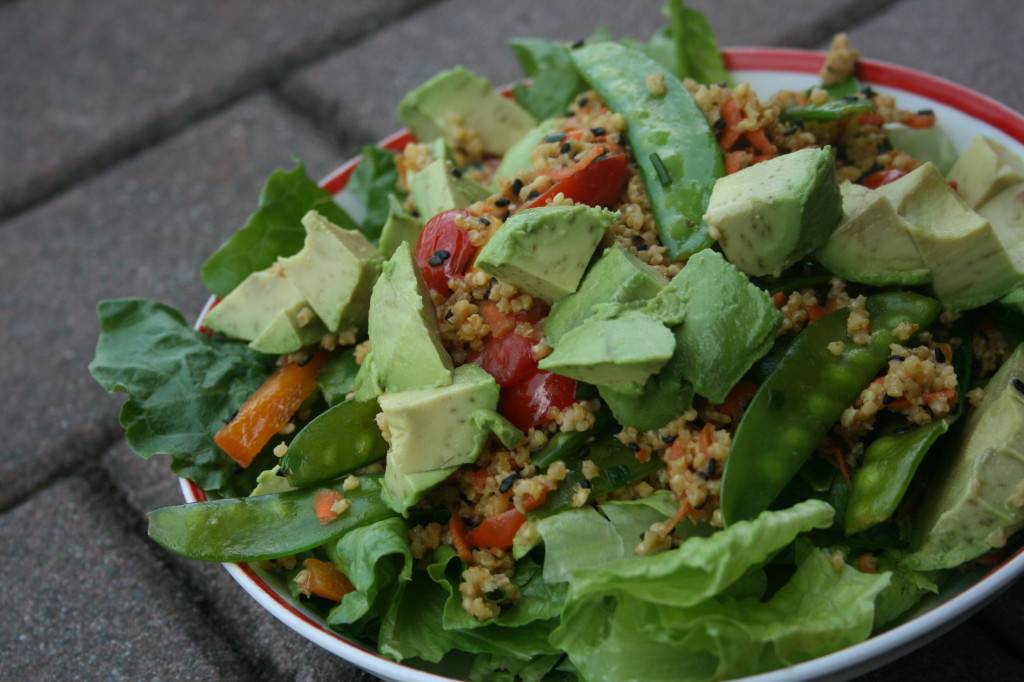 Unfortunately, carbohydrates have suffered a poor reputation in many circles over the past few decades. Yet they are very simply a requirement for human life. They are our bodies’ main source of energy, and therefore they sustain us. White sugar is an aspect of the carbohydrate family that does deserve to be shunned, as it has been stripped of vitamins, minerals, enzymes, fiber, fat and protein, which means that when we consume it we incur a nutritional debt. However, natural, whole complex carbohydrates, or plants in their natural and complete forms, are most deserving of a substantial spot on our plates. Even sugar cane, from which sugar is derived is not so terrible an option as the pure white crystals it is turned into. Studies have shown that those who labor in sugar cane fields in third world countries and actually chew on the cane whole (it is kind of like bamboo) do not have measurable quantities of people who have developed diabetes, or even who have developed cavities, two scourges unleashed by refined sugar.
Unfortunately, carbohydrates have suffered a poor reputation in many circles over the past few decades. Yet they are very simply a requirement for human life. They are our bodies’ main source of energy, and therefore they sustain us. White sugar is an aspect of the carbohydrate family that does deserve to be shunned, as it has been stripped of vitamins, minerals, enzymes, fiber, fat and protein, which means that when we consume it we incur a nutritional debt. However, natural, whole complex carbohydrates, or plants in their natural and complete forms, are most deserving of a substantial spot on our plates. Even sugar cane, from which sugar is derived is not so terrible an option as the pure white crystals it is turned into. Studies have shown that those who labor in sugar cane fields in third world countries and actually chew on the cane whole (it is kind of like bamboo) do not have measurable quantities of people who have developed diabetes, or even who have developed cavities, two scourges unleashed by refined sugar.
Another demonizing aspect of many carbohydrates, mainly legumes and whole grains is the fact that they can be quite hard to digest. This is because our bodies are sometimes lacking in the right enzymes to digest these foods and because they were not grown or prepared ideally. In adopting all the shortcuts we have with our food production we have also adopted nutritional deficiencies and greatly damaged the soil in which our food is grown. Soaking, and even sprouting, are ways to make grains and legumes much easier to digest, so that they provide our bodies with ample energy without needing to burn up too much of that energy in digestion. Thus they add to our energy bank. Now that being said, there is also the case of foods’ position on the pH scale, the balance of which is integral for good health. Most grains and legumes, along with nuts, meat and dairy are acidic, but whole food options like whole grains fall much closer toward the neutral point than do refined options like white sugar and flour. Sprouted grains and legumes tend to move over onto the alkaline side of the scale, where they sit alongside most vegetables, almonds, fruit… and millet.
Millet is the great exception we have found so far that is generally very healing in the body, and also places much less stress on the digestive system. While it would give me great joy if everyone were to start soaking and sprouting millet on their counters, I understand that that is not realistic, nor is it something I often make time for myself. However, soaking it overnight, or in the morning in a big bowl of water until preparation time can make a difference that pays off in the long run. I like to do this, especially in the winter when we need more hearty and grounding food. In the East, millet is a traditional food during the rainy seasons. It is warm, nourishing and very comforting. I soak a couple cups of millet and then cook it the next day and place it in a big container in the refrigerator. From there it is good for 5-7 days and I can make fresh salads like this one in the time that it would take me to defrost some white bread from the freezer and make a sandwich. Since it is available, I have found that my brothers, who would never otherwise think to make such a thing will dip into it and add it to a creamy tuna salad or something more standard American dietish to make it more filling.
Generally preparing millet, like most grains, requires using twice the amount of water as the grain. Once it has been soaked I find that equal parts water to grain are all that is needed. For example, if I am to prepare 3 cups of dry millet I place it in a large bowl with enough water to rise up a couple inches above the grain at night before I go to bed. The next evening I rinse it thoroughly in a fine mesh sieve under the tap over the kitchen sink. Then I place it in a large pot with 3 cups of water on the stove over high heat. Once it comes to a raging boil I turn the heat down to low and place the lid on for 20 minutes. I do recommend a larger pot than seems necessary because the grain will produce some frothiness as it comes to boil, and in a smaller pot it will boil over the edges and make a mess on the stove. After the 20 minutes I check to make sure all the water is evaporated, if it is not then I will leave it for another 5 minutes or so. Then I take it off the heat and set it aside, still covered, for around 10 minutes. Then I fluff it up with a large fork and it is ready to be served. The yield is around double what the grain was when dry, so in this case I would get around 6 cups, or usually a bit more.
- 6 cups cooked millet
- 2 carrots, grated
- 2 cups snap peas, tips on each end trimmed off if hard
- 1 orange bell pepper, julienned
- ½ cup green onion, sliced thinly
- 1 cup cherry tomatoes, halved
- 6 tablespoons organic tamari (look for “wheat free” if avoiding gluten)
- ¼ cup fresh lime juice
- ¼ cup white or black sesame seeds
- 2 tablespoons cold-pressed sesame oil
- Optional serving additions to make it more substantial: 6-12 cups of romaine, cleaned and torn into bite sized pieces and 6 small or 3 large avocados, cut in half, then cube the flesh, scoop out and place on top
- If the millet has been refrigerated, heat it up in a large pan on the stove over medium high heat, stirring constantly. As reheating, add in ¼ to ½ cup of water, bit by bit to prevent the millet sticking on the bottom and to keep it moist. If the millet is freshly cooked and warm this step can be omitted. Add all the ingredients into the warm pan of millet and stir gently to combine until evenly mixed. The warmth of the millet will slightly soften the vegetables and make the sauce distribute better. Serve warm.


